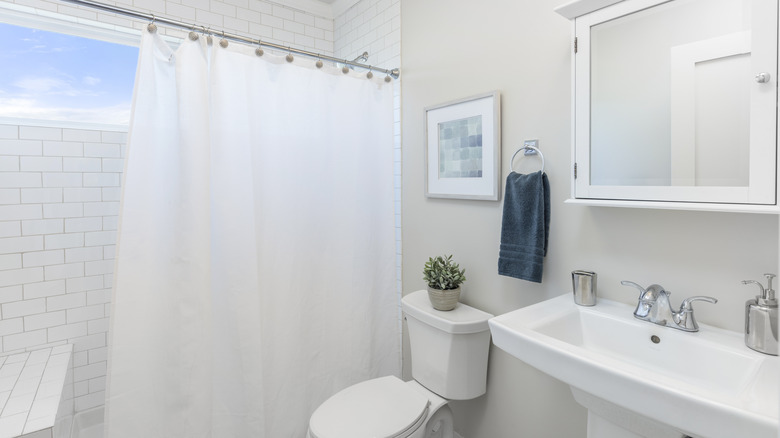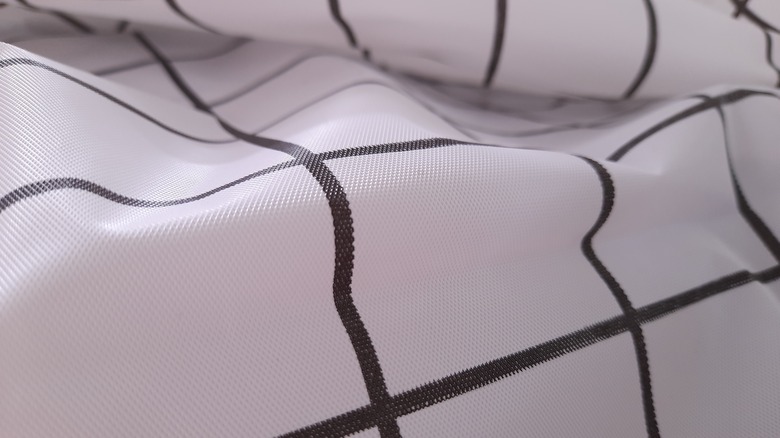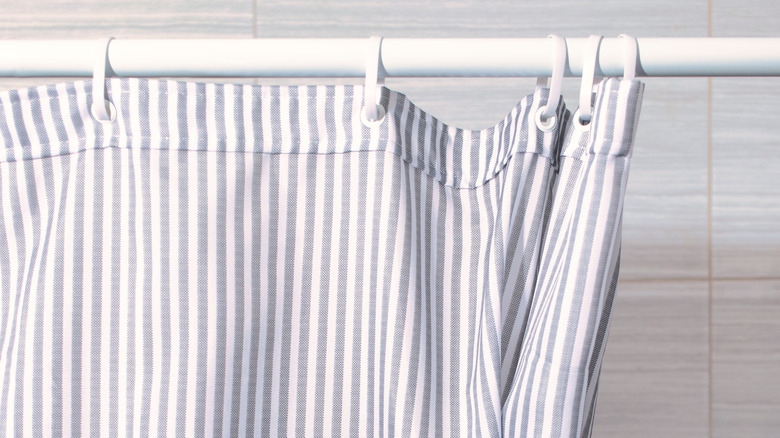Here's Everything You Should Know About PEVA Shower Curtains
When it comes time to pick out a new shower curtain, there are several things to consider, most notably what material to select. The shower curtain's material will dictate how you use and care for your curtain, as well as if there are any safety concerns with that particular material. You may have seen PEVA shower curtains advertised on today's market, but what are they exactly? PEVA is a plastic-based curtain manufactured to look and feel like a fabric vinyl but with the waterproof performance of plastic.
Get ready for some science: PEVA stands for polyethylene vinyl acetate, which is made up of polyethylene (the PE) and vinyl acetate (the VA). The polyethylene component is a plastic polymer that provides a strong waterproof foundation, while the vinyl acetate adds a pliability similar to fabric. These two blend together to create a win-win curtain that is durable and completely waterproof while maintaining the aesthetics of woven vinyl fabric.
How are PEVA shower curtains different than PVC or EVA options?
PVC, or polyvinyl chloride, shower curtains are similarly as inexpensive and durable as PEVA but are more like a traditional plastic curtain with no qualities of fabric. PVC shower curtains are also manufactured with chlorine that creates volatile organic compounds (or VOCs), which can cause respiratory and other health issues when inhaled. Many have claimed PEVA curtains are safer alternatives due to the lack of chlorine in the production process. However, when it comes to the data studying which shower curtain is safer, PVC or PEVA, there are safety concerns with each giving off VOCs, so be cognizant of this when choosing a shower curtain or liner.
Another curtain you will see on the market is an EVA (ethylene vinyl acetate) shower curtain. Despite being marketed under a separate name by different manufacturers, EVA and PEVA are actually two acronyms for the same material. Since ethylene vinyl acetate is a polymer by nature (thus the "poly"), a "P" was added to PEVA, which is the more prevalent of the two acronyms in the shower curtain world.
PEVA shower curtain use and care
Perhaps the biggest upside to a PEVA shower curtain is the ease with which it can be cleaned. Avoiding mold and mildew is a huge factor in keeping your bathroom clean, so the fact that the PEVA shower curtains can be easily hand scrubbed or machine washed is a major plus; just be sure to follow the label for washing instructions and avoid the dryer (which is not recommended for plastic curtains).
These inexpensive curtains are also available as liners for the shower side of a fabric curtain, which can prolong the life of your outer curtain. Regardless of whether your PEVA curtain is a liner or your main shower curtain, be sure to face the smooth side towards the shower with the textured side facing out toward the room or outer shower curtain. Water will run off the smooth side more easily, making it more waterproof, as it keeps the hems and bumps on the textured side from catching the water, which could lead to the formation of mold or mildew.
Finally, when the life of your PEVA shower curtain comes to an end, some PEVA curtains are recyclable. However, municipal recycling may not accept them, so you'll need to bring them to a recycling facility that accepts the plastic. Alternatively, these brilliant hacks for repurposing your old shower curtain before throwing it away or recycling it serve as more sustainable ways to give the PEVA curtain its next chapter after your shower.


